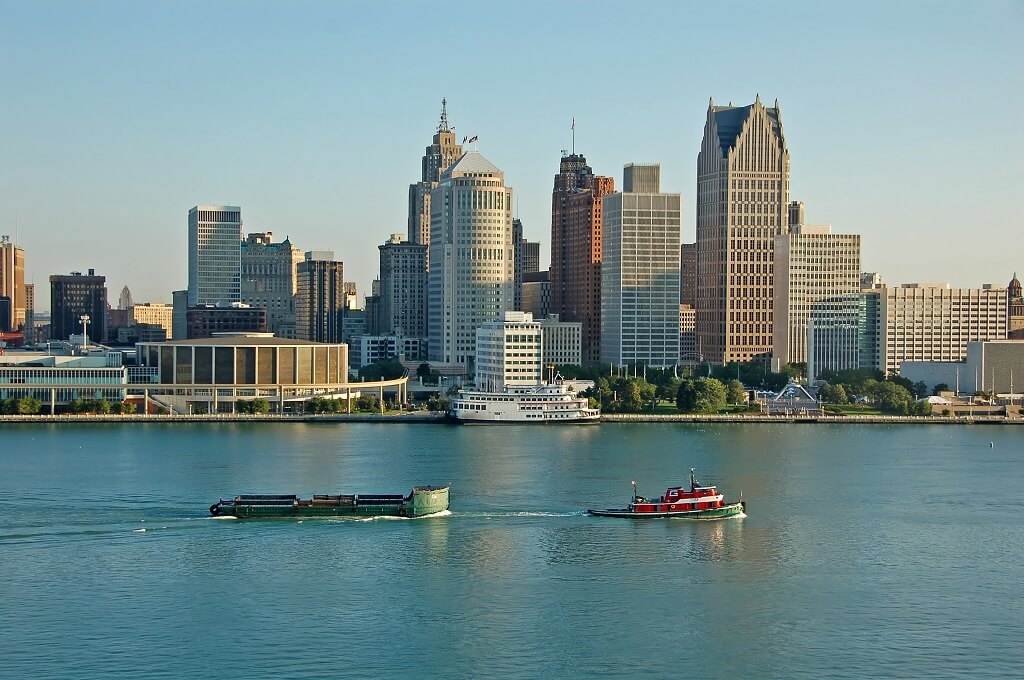Businessman Dan Gilbert is proposing to build what would be Detroit’s tallest building on the old Hudson’s site.
The project would be many things at once — an architectural icon, a hub for technology and the signature element of Gilbert’s downtown developments. It would include 200 rental apartments, offices and theater and retail space. It would also include a large public market.
A tower would soar 700 feet.
The Downtown Development Authority gave Gilbert until Nov. 1 to line up incentives for the project.Construction would begin December 1 and finish by the end of 2020.
Although just one of many new downtown developments today, a rebirth of the Hudson’s site would be special. The Hudson’s site has long held special significance for Detroiters, who in generations past flocked to the massive department store and mourned the closing of the Hudson’s store in 1983 as an ominous sign of the city’s decline.
Building the full scope of Gilbert’s vision for the site appears to depend on state lawmakers approving proposed legislation that would create expanded tax incentives for such major developments. The legislation is coming to a vote in the state Senate and needs to be considered by the state House as well. Gilbert and his team have said they would have to scale back their most ambitious plans absent the proposed tax incentives.
Michigan Thrive, a coalition of some 40 communities, chambers of commerce, and economic development agencies across the state, supports the legislation. The legislation limits each city to one approved plan per year, a provision meant to ensure that the benefits will be spread across Michigan.
The legislation would allow developers such as Gilbert to keep a portion of the new tax revenue generated by their projects with the rest of the new tax revenue going to the local government and the state. The concept is that the new revenue would not exist without the new project so therefore everyone benefits.
The legislation in the state Senate would create a new category specifically for major projects that will transform contaminated, blighted or abandoned sites into major new developments. To close the financial gap and make these large, challenging projects possible, the legislation allows the project to capture state sales and income taxes generated from the construction activities on-site and up to 50% of the state income taxes generated from new jobs and residents within the completed development for a period not to exceed 20 years.
134 years ago, Hudson’s opened in Detroit
Known as Tax Increment Financing (TIF), this approach means the developer gets nothing on the front end. If the project does not generate the new tax revenue, the developer gets nothing and therefore bears all the risk.
Gilbert has held development rights to the Hudson’s site for several years while he has tried to stitch together a plan that makes sense. Two years ago he released a partial rendering hinting at a daring architectural design to create a destination attraction there. New York-based architecture firm SHoP and the Detroit-based Hamilton Anderson Associates continue to work on the design.
Last April, the DDA gave tentative to Gilbert’s plan for the site and agreed to sell him a city-owned underground garage on the site for $15 million.
At that time, Gilbert’s team said the proposed building would include 225,000 square feet of commercial, retail and community gathering space as well as 250 apartments, of which 50 units would be be set aside as “affordable.” Construction could start in April 2017 and finish by spring 2020.
At last year’s Mackinac Policy Conference, Matt Cullen, CEO of Gilbert’s Rock Ventures. predicted that residential rental rates for apartments at the Hudson’s site would set a new high-water mark for the Detroit rental market.
Detroit’s iconic Hudson’s store closed in January 1983 as part of the decades-long flight from the city by companies and residents. After a variety of redevelopment schemes failed, the city imploded the massive structure in 1998.
Since then, an underground parking garage has operated on the site while the city hoped for a visionary new project to rise there.


